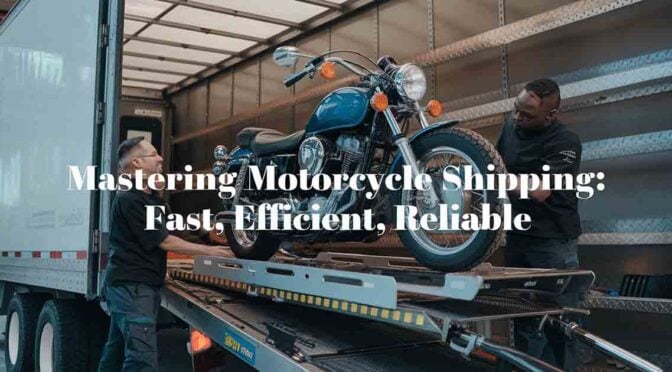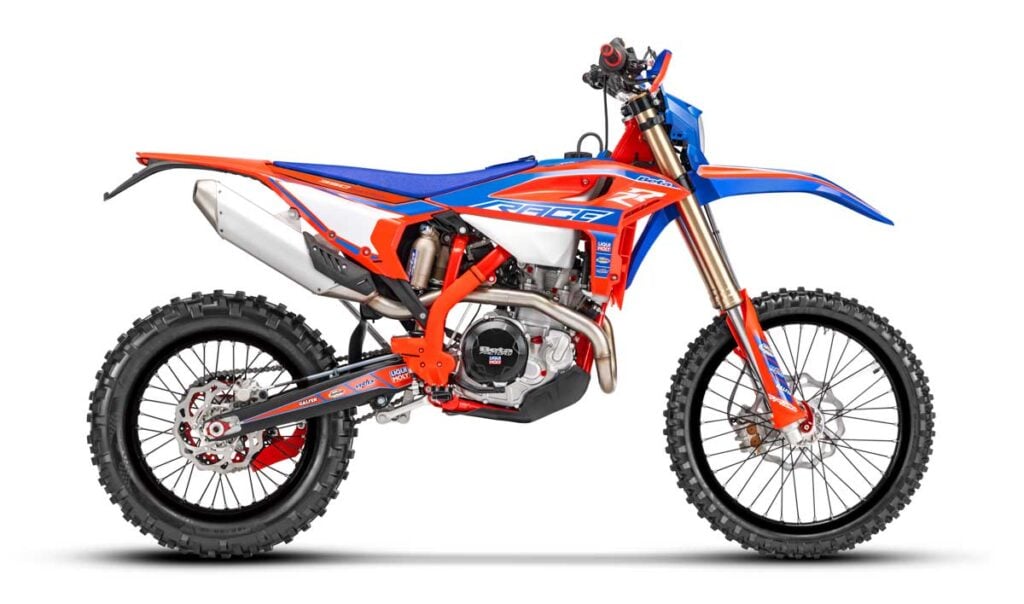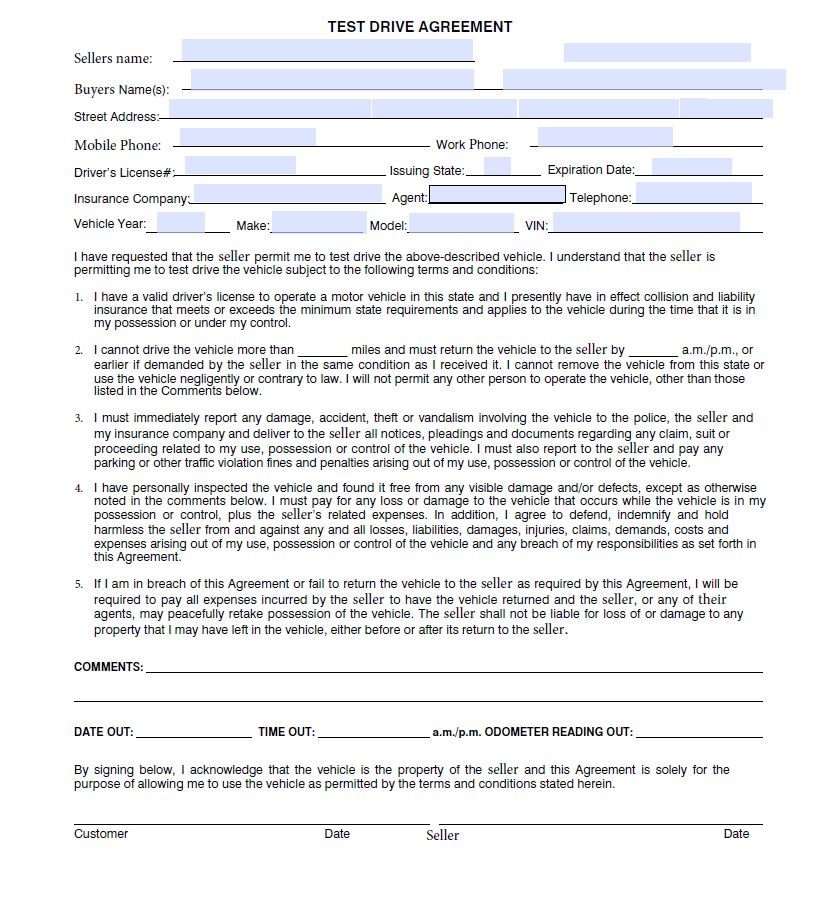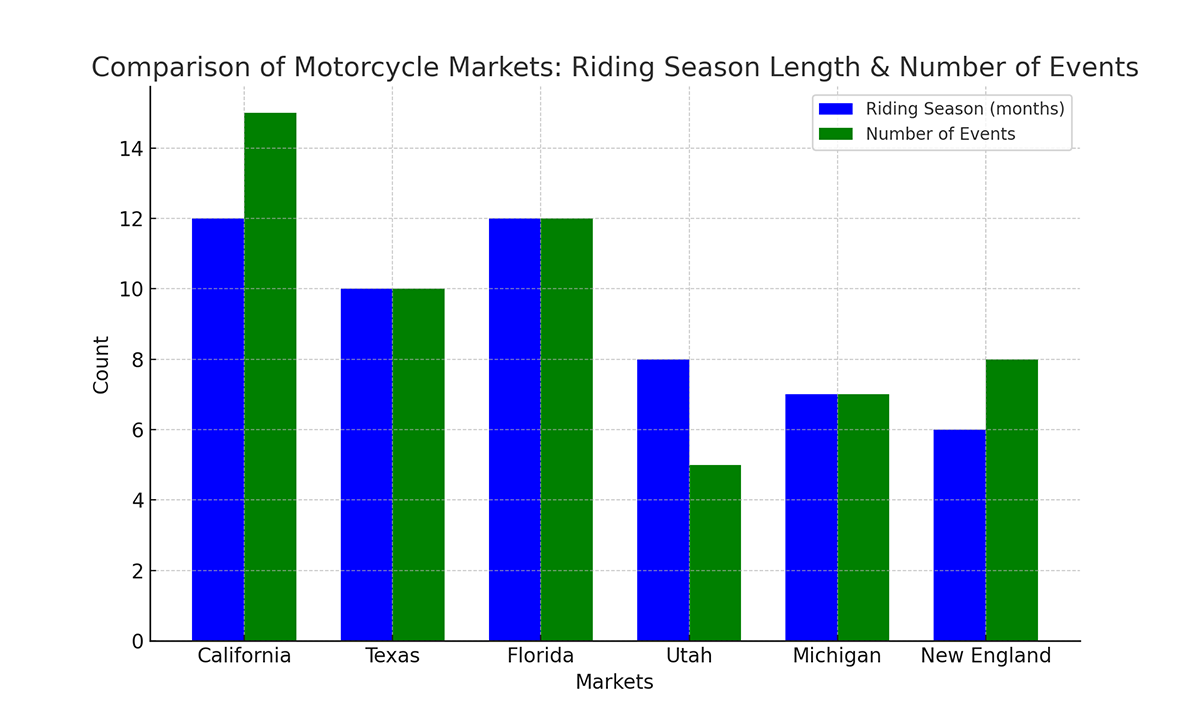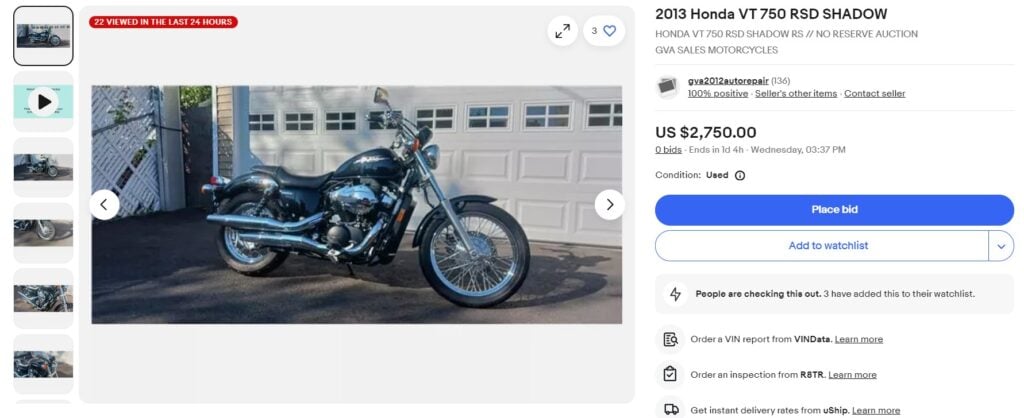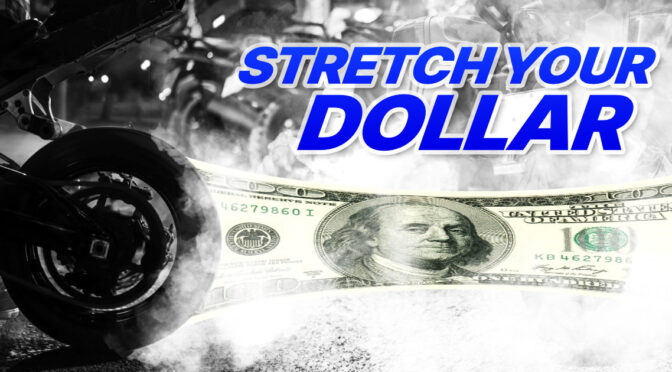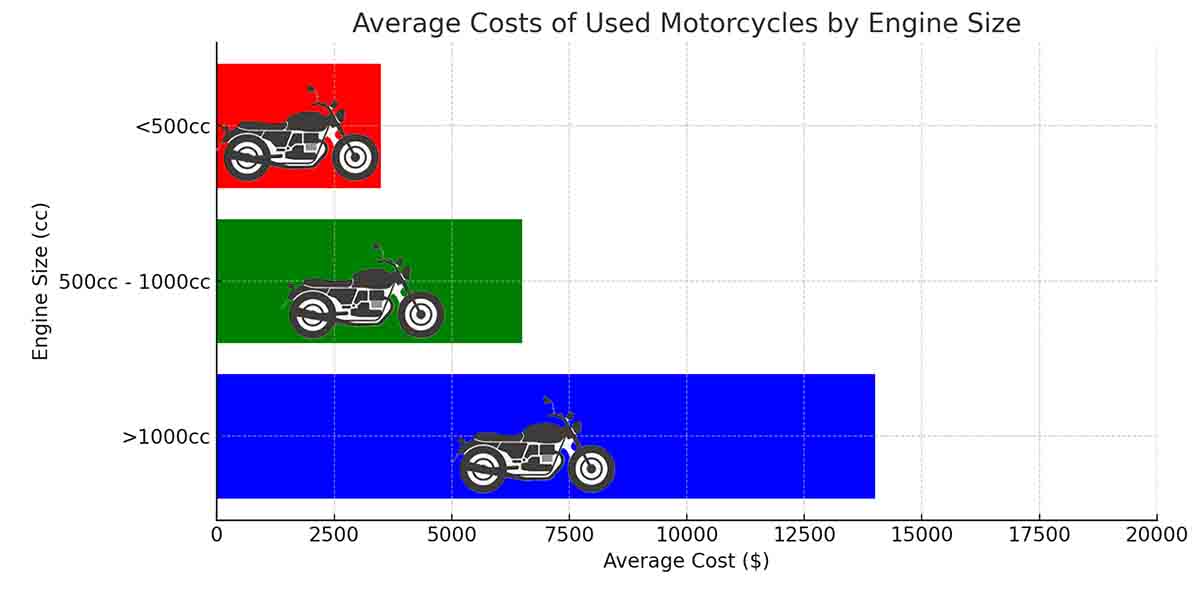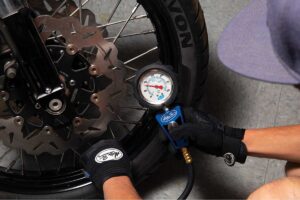In the world of motorcycle sales and shipping, understanding how major companies manage logistics can be incredibly valuable for individuals. Whether you’re planning to transport your bike across the country, participate in a rally, or even flip motorcycles for profit, learning motorcycle shipping expert tips from the pros can save you time, money, and headaches. This blog breaks down the shipping methods and strategies top industry players use, providing practical tips for enthusiasts and private sellers alike. From the use of specialized transport companies to handling direct-to-dealer deliveries, you’ll discover how the big brands ensure their bikes arrive safely and efficiently, and how you can apply those lessons to your own motorcycle shipping needs.
Who is the Biggest Seller of Motorcycles?
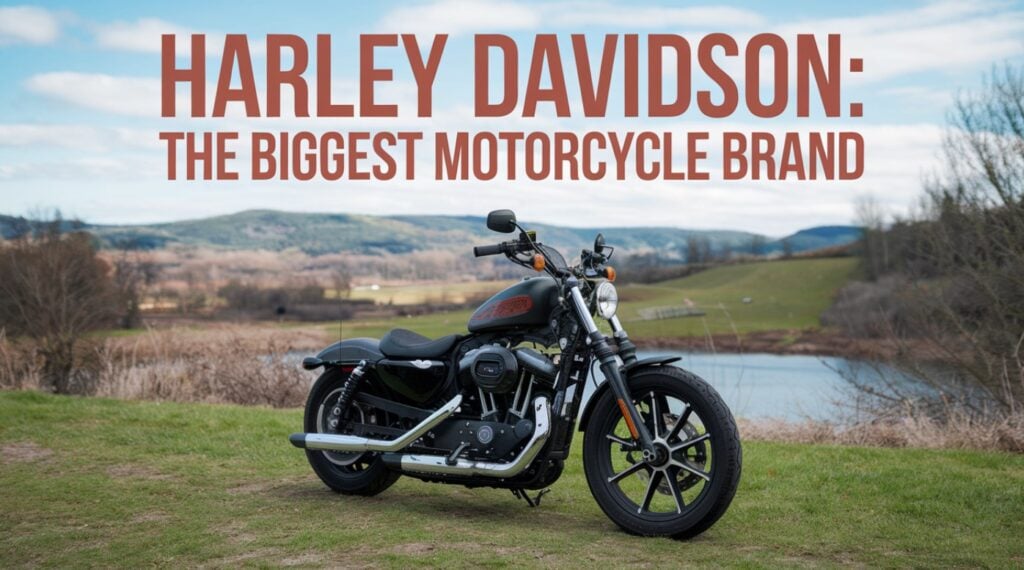
Other major players in the U.S. motorcycle market—Honda, Yamaha, Kawasaki, and Suzuki—dominate with their diverse lineups that span sport, cruiser, off-road, and adventure bikes. These brands cater to a wide range of riding styles and preferences, from high-performance sportbikes to versatile off-road machines. Their ability to manage large-scale shipping logistics efficiently ensures that motorcycles arrive at dealers and events across the country, setting an example for individuals looking to ship their own bikes. By observing how these companies handle distribution and transport, private sellers and enthusiasts can adopt best practices to ensure safe and efficient delivery of their motorcycles, whether across town or across the country.
- Honda has been a dominant force in the global motorcycle market for decades. In the U.S., it offers a wide range of models, from the affordable and beginner-friendly Honda Rebel to the high-performance Honda CBR sport bikes. Honda’s extensive dealer network and reputation for reliability and innovation have made it a favorite among American riders.
- Yamaha is known for its diverse product lineup that appeals to a broad range of riders. From the sporty YZF-R1 to the versatile MT series and the off-road WR models, Yamaha has positioned itself as a leader in both the on-road and off-road segments. Yamaha’s success can be attributed to its continuous innovation, quality engineering, and a strong dealer network that provides excellent customer service.
- Kawasaki has carved out a niche in the performance motorcycle market with its Ninja series, which has become a benchmark for sportbikes worldwide. Kawasaki also has a strong presence in the off-road and adventure bike segments, with models like the KLR650 and the Versys series. Kawasaki’s focus on high-performance machines and a dedicated following have made it one of the top sellers in the U.S.
- Suzuki is another key player, offering a wide range of motorcycles that cater to different riding styles. From the legendary Hayabusa sportbike to the versatile V-Strom adventure bikes, Suzuki has a well-rounded lineup that appeals to a broad audience. The brand is known for its reliability and value, making it a popular choice among riders who seek performance without breaking the bank. Suzuki’s strong dealer network and commitment to innovation continue to drive its success in the U.S. market.
These companies have established extensive dealer networks and sophisticated distribution strategies that ensure their motorcycles are available nationwide. They invest heavily in marketing, customer engagement, and dealer support to maintain their market share. By offering a wide range of models that cater to different types of riders, they ensure that they meet the diverse needs of the motorcycle market.
In addition to these major manufacturers, several other brands have carved out significant market segments:
- Beta USA has been around since 1905 and is an Italian-built motorcycle manufacturer. This fourth-generation family-owned business has a strong reputation in the off-road and enduro motorcycle market. Known for their high-quality, competition-ready bikes, Beta’s lineup includes a range of two-stroke and four-stroke models that appeal to both amateur and professional riders. Beta’s focus on craftsmanship and performance has earned it a loyal following, particularly among enthusiasts who value the brand’s attention to detail and customization options.
- Triumph is a British manufacturer with a rich heritage and a strong presence in the U.S. market. Known for its classic styling and modern engineering, Triumph’s lineup includes popular models like the Bonneville, Tiger, and Street Triple. Triumph has successfully blended retro aesthetics with modern performance, attracting a wide range of riders. Their strong dealer network and commitment to quality have helped them maintain a significant market share.
- Ducati, an Italian brand, has a dedicated following for its high-performance sportbikes and stylish designs. Models like the Panigale and Monster are known for their cutting-edge technology, design, and engineering. Ducati has positioned itself as a premium brand, focusing on delivering a thrilling riding experience and a strong sense of exclusivity. Its network of dedicated dealerships offers a premium customer experience, reinforcing its status as a luxury motorcycle brand.
- GasGas has become increasingly popular in the off-road and trials segments. Originally known for its trials bikes, GasGas has expanded its lineup to include enduro and motocross models, attracting a new generation of off-road enthusiasts. With a reputation for building robust and competitive machines, GasGas has found its place in a market that values performance and reliability. The brand’s recent acquisition by KTM has further strengthened its market presence and distribution network.
- KTM is a major player in the off-road and adventure motorcycle segments, known for its high-performance bikes like the EXC, SX, and Adventure series. KTM has a strong reputation for innovation and quality, often leading in the adoption of new technologies in motocross and enduro bikes. The brand’s aggressive marketing strategy, racing success, and robust dealer network have made it a favorite among off-road and adventure riders in the U.S.
- Husqvarna has a rich history dating back to 1903 and has established itself as a leader in the off-road and dual-sport motorcycle segments. Known for their lightweight and high-performance bikes, models like the TE and FE series have made Husqvarna a popular choice among enduro and motocross enthusiasts. The brand’s focus on innovation, durability, and a growing dealer network has strengthened its presence in the U.S. market, appealing to both amateur and professional riders.
These companies, along with others like BMW, have established themselves as significant players in the U.S. motorcycle market. Their success is not only due to their diverse product offerings but also their ability to create strong brand identities, deliver customer-centric experiences, and adapt to changing market trends. They invest in building robust dealer networks, providing training, marketing support, and customer service to ensure that dealers can effectively sell and support their products.
Furthermore, the rise of electric motorcycles has started to shift the dynamics of the market. Companies like Zero Motorcycles and Harley-Davidson’s LiveWire brand are pioneering the electric motorcycle space, focusing on innovation and sustainability. While they currently occupy a smaller segment of the market, the growing demand for environmentally friendly vehicles could see these electric motorcycle distributors become major players in the near future.
While Harley-Davidson, Honda, Yamaha, Kawasaki, and Suzuki currently dominate the motorcycle distribution market in the United States, brands like Beta USA, Triumph, Ducati, GasGas, and KTM are making significant strides. The landscape is evolving, and the ability to adapt to new trends—such as the rise of electric motorcycles and changing consumer preferences—will determine which companies continue to lead the market in the years to come.
Is Flipping Motorcycles a Good Business?
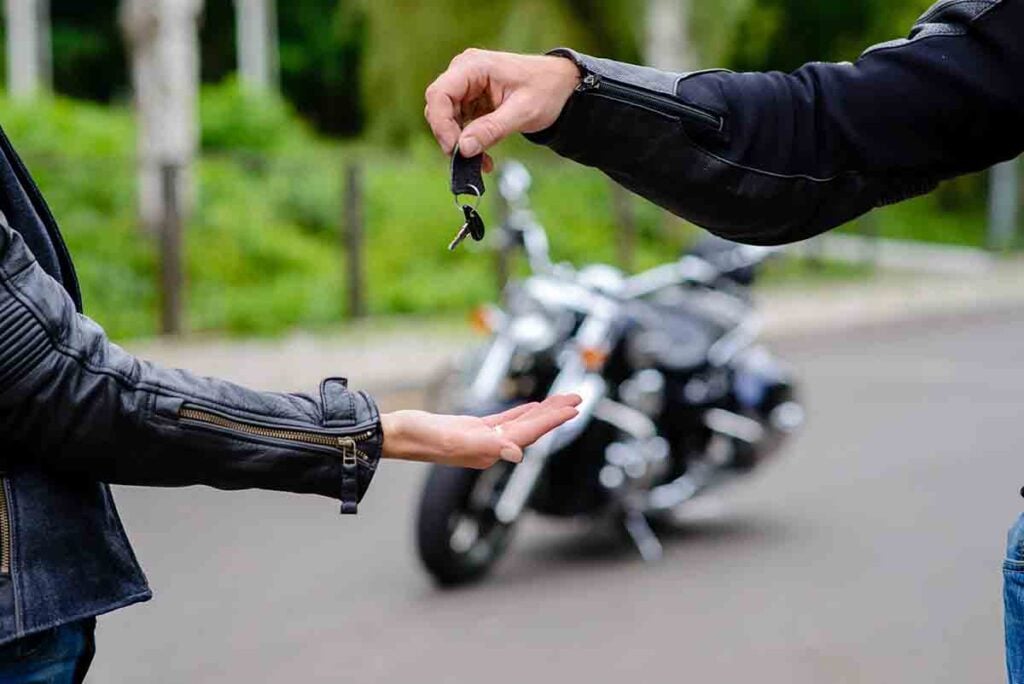
Flipping motorcycles can be a profitable endeavor when combined with the right shipping strategies, ensuring safe transport to buyers across the country. The key to success lies in understanding market trends and efficiently managing logistics, much like how major companies handle motorcycle shipping. Whether sourcing motorcycles from private sellers, auctions, or online platforms, individuals who flip bikes must not only focus on repairs and upgrades but also on how to ship these motorcycles securely and cost-effectively to maximize profits. By leveraging the same shipping methods used by large companies—such as specialized motorcycle carriers and careful route planning—flippers can avoid common pitfalls and ensure their motorcycles arrive in top condition, making for smoother transactions and happier customers.
1. Research and Market Knowledge
The foundation of a successful motorcycle flipping business is extensive research and a deep understanding of the market. This includes:
- Identifying High-Value Models: Classic models, limited editions, or bikes from reputable brands like Harley-Davidson, Honda, or Ducati tend to have higher resale value. Motorcycles with a cult following or those that have a strong aftermarket support community are often more desirable.
- Understanding Trends: Stay informed about market trends and seasonal demand. For example, certain models may be in higher demand during specific seasons or after they receive positive media coverage or win races.
- Knowing Where to Buy: Successful flippers source motorcycles from various places, including online marketplaces (e.g., eBay, Craigslist), local auctions, estate sales, or even direct deals with private sellers. The key is to find motorcycles that are undervalued or need minimal work to increase their market value. For more tips on purchasing safely, check out our guide on Safe Buying.
2. Assessing and Valuing Motorcycles
Being able to accurately assess the condition of a motorcycle is crucial. This skill involves:
- Mechanical Inspection: Thoroughly inspecting the bike’s mechanical condition, including the engine, transmission, brakes, and suspension. Look for signs of wear and tear, rust, or damage that may require costly repairs.
- Cosmetic Condition: Evaluating the bike’s appearance, such as paintwork, seat condition, and overall cleanliness. Sometimes, a simple cosmetic refresh can significantly increase the bike’s appeal and value.
- Valuation: Knowing the market value of the motorcycle in its current condition versus its potential value after repairs or upgrades. Use tools like the Kelley Blue Book or online motorcycle valuation guides to estimate pricing.
3. Making Smart Purchases
To maximize profits, successful flippers focus on:
- Negotiating Skills: Being able to negotiate a lower purchase price is crucial. Many sellers may not know the true value of their motorcycle or may be willing to sell at a discount for a quick sale.
- Bulk Buying: Sometimes, buying multiple bikes at once from auctions or estate sales can lead to bulk discounts. Flippers can then sell these bikes individually for a higher total profit.
- Fixer-Uppers: Identifying motorcycles that need minor repairs or basic maintenance, which can be bought cheaply and sold at a significant markup once fixed.
4. Upgrading and Customizing
Adding value to a motorcycle is a key part of the flipping process. This can include:
- Mechanical Repairs: Performing necessary mechanical repairs to ensure the bike is in good working order. This might include tuning the engine, replacing worn-out parts, or fixing electrical issues.
- Customizations: Customizing a motorcycle to enhance its appeal, such as adding aftermarket parts, upgrading the exhaust system, or customizing the paint job. Unique customizations can make a motorcycle stand out in the market and attract buyers looking for something special.
- Detailing: A thorough cleaning and detailing can make a significant difference in a bike’s appearance and perceived value. Polishing the chrome, waxing the paint, and replacing worn grips or seats can give the motorcycle a like-new appearance.
5. Marketing and Selling
The selling process is where the profits are realized, and successful flippers focus on:
- Effective Marketing: Creating compelling listings with high-quality photos and detailed descriptions. Highlight any unique features, upgrades, or customizations that add value to the bike. Using online platforms like Cycle Trader, eBay Motors, and Facebook Marketplace can reach a wide audience. Learn more in our guide to getting top dollar when selling your motorcycle.
- Networking: Building a network within the motorcycle community, including local dealers, enthusiasts, and clubs. This network can help in finding potential buyers or even sourcing bikes to flip.
- Pricing Strategy: Setting the right price is crucial. It should be competitive yet reflect the value added through repairs or customizations. Being open to negotiations while maintaining a minimum acceptable price ensures you don’t undersell the bike.
6. Legal and Financial Considerations
Successful motorcycle flippers also take into account:
- Title and Documentation: Ensuring that the motorcycle has a clear title and all necessary documentation. This is important for a smooth sale and to avoid legal issues. Learn more in our guide about the legal aspects of selling your motorcycle.
- Taxes and Regulations: Being aware of local tax regulations and any required licensing for selling motorcycles, especially if doing so as a business.
- Budget Management: Keeping track of all expenses, including purchase price, repairs, upgrades, and marketing costs. This helps in calculating the actual profit and determining the viability of the business.
7. Scaling the Business
As experience and profits grow, flippers can look to scale their business by:
- Increasing Inventory: Buying and flipping more motorcycles simultaneously to increase revenue.
- Establishing a Brand: Creating a brand or reputation for quality flipped motorcycles can attract more buyers and justify higher prices.
- Expanding Services: Offering additional services such as motorcycle maintenance, customization, or consignment sales for other owners.
Turning Passion into Profit
Flipping motorcycles can be a rewarding and profitable business for those with the right skills, knowledge, and passion for motorcycles. It requires a keen eye for value, mechanical know-how, and a strategic approach to buying, upgrading, and selling. Engaging with reputable motorcycle distributors and staying informed about market trends can help maximize profits in this business. However, like any venture, it comes with risks, and success depends on careful planning, thorough research, and effective execution.
What are the Top Motorcycle Markets?
The United States boasts several prime motorcycle markets, with California, Texas, and Florida leading the charge thanks to their extensive dealer networks, favorable riding conditions, and vibrant motorcycle cultures. These states have become essential hubs for shipping and distributing motorcycles across the country. The efficient transport systems used by big companies ensure motorcycles reach dealers quickly and in pristine condition, offering valuable lessons for individuals shipping their own bikes. By observing how motorcycles are distributed to high-demand regions with varying terrain and seasonal riding patterns, individuals can better plan their own shipping strategies to ensure safe delivery, whether selling to enthusiasts or relocating their own ride.
| Market | Characteristics |
|---|---|
| California | Year-round riding, diverse terrain, strong motorcycle culture, and numerous events. |
| Texas | Extended riding season, varied landscapes, and a mix of urban and rural routes. |
| Florida | Coastal routes, nearly year-round riding, and major motorcycle events. |
| Utah | Adventure and off-road riding, scenic landscapes, and growing motorcycle community. |
| Michigan | Unique blend of urban and rural riding, diverse landscapes, and seasonal attractions. |
| New England | Scenic routes, strong touring culture, and distinct seasonal riding experiences. |
Urban areas like Los Angeles, CA, Miami, FL, and Austin, TX are particularly vibrant for motorcycle culture, where distributors can find a strong customer base for various models and types of motorcycles.
Riding Seasons and Weather
- California is known for its year-round riding season, thanks to its mild climate and varied geography. Riders in Southern California enjoy sunny weather almost all year, making it an ideal market for motorcycle distributors. The warm, dry climate of the region allows for uninterrupted riding, attracting both local and visiting motorcyclists. In Northern California, the riding season may be slightly shorter due to cooler, wetter winters, but the scenic routes through areas like the Pacific Coast Highway and Napa Valley remain popular destinations.
- Texas offers an extended riding season, especially in the southern and central parts of the state where winters are mild. The spring and fall are particularly popular times for riding due to comfortable temperatures and lower humidity. Texas’s vast open roads and diverse landscapes, from the Hill Country’s winding roads to the open plains, provide ample riding opportunities for enthusiasts.
- Florida has a nearly year-round riding season as well, though summer can be hot and humid. The state’s flat terrain and coastal highways offer unique riding experiences. Florida’s winter season, when temperatures are mild and pleasant, is especially popular for riding, drawing in riders from colder parts of the country who want to escape the winter chill.
Riding Areas and Terrain
- California offers some of the best and most diverse riding terrain in the country. Riders can enjoy coastal highways like the iconic Pacific Coast Highway, mountain roads in the Sierra Nevada, and desert trails in the Mojave Desert. These varied landscapes attract different types of riders, from those who prefer leisurely coastal cruises to adventure riders seeking off-road trails.
- Texas is home to famous riding routes such as the Twisted Sisters in the Texas Hill Country, which offers challenging curves and scenic vistas. The state’s vast rural areas provide long stretches of open road, making it a favorite for touring enthusiasts. Additionally, areas like Big Bend National Park offer adventurous off-road and dirt biking opportunities.
- Florida may not have the elevation changes of California or Texas, but it offers beautiful coastal routes like the Overseas Highway in the Florida Keys and scenic inland rides through the Everglades and Ocala National Forest. The state’s extensive network of highways and back roads provide a variety of options for both casual and experienced riders.
- Utah is a paradise for adventure and off-road enthusiasts. The state’s diverse terrain includes everything from the red rock landscapes of Moab to the alpine roads in the Wasatch Mountains. Utah’s scenic byways, such as the Alpine Loop and Highway 12, offer breathtaking views and a variety of riding experiences, making it a growing market for adventure and dual-sport motorcycles.
- Michigan offers a unique blend of urban and rural riding experiences. The state’s extensive network of roads includes scenic routes along the Great Lakes and through the Upper Peninsula. Michigan’s diverse terrain and seasonal changes make it a popular destination for both cruisers and sport bike riders, especially during the fall when the foliage creates a stunning backdrop for rides.
- New England boasts some of the most picturesque riding routes in the country. States like Vermont, New Hampshire, and Maine offer winding roads through forests, mountains, and coastal areas. The region’s four distinct seasons provide a range of riding experiences, with fall being particularly popular for its vibrant foliage. New England’s scenic byways, like the Kancamagus Highway in New Hampshire and the Mohawk Trail in Massachusetts, are favorites among motorcyclists.
Motorcycle Culture
- California is often considered the epicenter of motorcycle culture in the U.S., with a rich history that includes everything from classic cruiser clubs to cutting-edge sport bike scenes. The state hosts numerous motorcycle events, rallies, and races throughout the year, such as the Quail Motorcycle Gathering and the California Superbike School. California is also home to several famous motorcycle clubs and a strong custom bike scene, making it a hotspot for enthusiasts and a lucrative market for motorcycle distributors.
- Texas boasts a strong and diverse motorcycle culture, with a large community of cruiser, touring, and sport bike riders. Events like the Rot Rally (Republic of Texas Biker Rally) in Austin and Lone Star Rally in Galveston are some of the largest motorcycle rallies in the country, drawing tens of thousands of riders each year. The state’s “bigger is better” attitude is reflected in its motorcycle community, where large displacement cruisers and custom bikes are particularly popular.
- Florida has a vibrant motorcycle culture, with a focus on coastal cruising and group rides. The state hosts some of the most significant motorcycle events in the country, including Daytona Bike Week and Biketoberfest in Daytona Beach, which attract riders from across the nation and around the world. Florida’s motorcycle culture is diverse, with a strong presence of cruiser, sport bike, and touring enthusiasts who enjoy the scenic coastal routes and year-round riding opportunities.
- Utah has a growing motorcycle culture, particularly among adventure and off-road riders. The state’s vast public lands and network of trails make it a popular destination for dual-sport and adventure motorcyclists. Events like the Utah 500 Adventure Ride showcase the state’s stunning landscapes and contribute to its emerging status as a motorcycle-friendly destination.
- Michigan is known for its active riding community and vibrant motorcycle events. The state’s scenic routes and diverse landscapes attract a mix of cruisers, sport bikes, and touring riders. Michigan’s motorcycle culture is highlighted by events like the Michigan Bikers Association Rallies and the annual Midwest Motorcycle Rally, which bring together riders from across the region.
- New England has a rich motorcycle culture that emphasizes scenic rides and community events. The region’s beautiful landscapes and winding roads make it a favorite among touring and cruiser riders. New England hosts several motorcycle rallies and events, such as the Laconia Motorcycle Week in New Hampshire, which is one of the oldest and largest motorcycle rallies in the country, drawing enthusiasts from all over.
Emerging Markets and Regions
- Arizona and Nevada are also emerging as popular markets due to their favorable climates and scenic desert landscapes. Both states offer extensive networks of roads that are perfect for long-distance touring and adventure riding. Events like Arizona Bike Week and Las Vegas BikeFest are gaining popularity, attracting riders and distributors alike.
- Colorado is known for its breathtaking mountain roads and diverse terrain, attracting adventure and touring riders. The state’s shorter but intense riding season, typically from late spring to early fall, includes routes through the Rocky Mountains and scenic byways like Trail Ridge Road.
- The Pacific Northwest, including Oregon and Washington, offers stunning natural beauty and a strong riding community. The region’s winding forest roads, coastal highways, and mountain passes make it an attractive market for motorcycle enthusiasts. While the riding season is more limited due to rain and cooler weather, the unique terrain attracts a dedicated group of riders who enjoy the challenge of the Pacific Northwest’s diverse landscapes.
Urban Centers and Dealer Networks
- Urban areas like Los Angeles, Miami, and Austin are particularly vibrant for motorcycle culture. Los Angeles, with its sprawling highway system and proximity to scenic routes, has one of the largest motorcycle communities in the country. The city is known for its strong custom bike scene, sport bike culture, and the presence of numerous motorcycle dealerships and service centers.
- Miami offers a different riding experience with its flat terrain and coastal routes. The city’s motorcycle culture is influenced by its diverse population and vibrant nightlife, making it a hub for cruisers, sport bikes, and custom bikes.
- Austin has a growing motorcycle community, fueled by its reputation as a city that embraces alternative lifestyles and outdoor activities. The city’s proximity to the Texas Hill Country provides easy access to some of the state’s best riding roads, making it a popular destination for motorcyclists.
Motorcycling Across America
The top motorcycle markets in the United States are not only defined by sales figures but also by the rich culture, favorable riding conditions, and diverse terrain they offer. California, Texas, and Florida lead the way due to their extended riding seasons, variety of riding areas, and vibrant motorcycle communities. States like Utah, Michigan, and the New England region are also significant due to their unique riding landscapes and growing motorcycle cultures. These markets provide motorcycle distributors ample opportunities to engage with enthusiasts, showcase their products, and be a part of a thriving motorcycle culture. To enhance your presence in these regions, explore our Marketing Strategies for Motorcycle Dealers for effective approaches. As new markets emerge and the motorcycle community continues to evolve, understanding these regional differences is crucial for distributors looking to maximize their reach and impact in the industry.
What are the Best Websites to Sell Motorcycles?
When it comes to selling motorcycles, choosing the right online platform can make a significant impact on visibility and sales. Whether you’re an individual seller or a dealer looking to move inventory, leveraging platforms that offer the right combination of audience reach, ease of use, and affordability is essential. By looking at how large companies utilize these platforms, you can apply the same strategies for shipping and promoting your listings effectively. Whether it’s using high-traffic sites like Cycle Trader or eBay Motors for national exposure or relying on Facebook Marketplace and Craigslist for local sales, understanding how to pair the right platform with the best shipping practices can help streamline the process and ensure a smooth transaction for both buyers and sellers.
Cycle Trader
- Visibility in Search Engine Results Pages: Cycle Trader is one of the most recognized platforms for buying and selling motorcycles, and it ranks highly in search engine results pages for relevant keywords. This high visibility makes it easier for potential buyers to find listings, increasing the chances of a successful sale.
- Brand Awareness: Cycle Trader is a well-established brand in the motorcycle industry, which adds a level of trust and credibility to listings. Buyers are more likely to consider listings on this platform because of its reputation as a go-to site for motorcycle sales.
- Effectiveness: The platform offers a wide range of features for sellers, including detailed listing options, high-quality images, and filtering tools that help buyers find exactly what they’re looking for. It caters to both new and used motorcycles, allowing distributors to showcase their entire inventory effectively.
- Affordability: While Cycle Trader offers several listing packages, including free basic listings, premium options can be more expensive. However, the cost can be justified by the platform’s large audience and specialized market, which often leads to quicker and more profitable sales.
eBay Motors
- Visibility in Search Engine Results Pages: eBay Motors is a part of the larger eBay marketplace, which has strong search engine optimization and ranks well in search engine results pages. This broad visibility helps attract a wide audience, including both local and international buyers.
- Brand Awareness: eBay is a globally recognized brand, known for its auction-style listings and buyer protection policies. This brand recognition can increase buyer confidence, making them more likely to engage with listings.
- Effectiveness: eBay Motors offers auction-style listings, allowing sellers to potentially get a higher price through competitive bidding. Additionally, the platform provides various listing enhancements, such as additional photos, vehicle history reports, and shipping options, which can make listings more attractive to buyers.
- Affordability: While eBay charges listing fees and takes a percentage of the final sale price, the cost can be offset by the platform’s vast audience reach and the possibility of achieving higher sale prices through auctions. For sellers looking for a quick sale, eBay’s “Buy It Now” option offers a fixed-price format.
Craigslist
- Visibility in Search Engine Results Pages: Craigslist listings often appear in local search results, which is advantageous for sellers targeting a specific geographic area. However, it may not have the same national visibility as more specialized platforms like Cycle Trader.
- Brand Awareness: Craigslist is well-known for local classifieds, and its simplicity and ease of use make it a popular choice for quick sales. While it may not have the specialized focus of other platforms, its widespread use gives it a significant presence in the online marketplace.
- Effectiveness: Craigslist is effective for local sales and quick transactions, as it connects sellers directly with local buyers. The platform’s simplicity allows for fast posting and immediate responses. However, it lacks advanced listing features, which can limit the amount of information sellers can provide about the motorcycle.
- Affordability: Craigslist is one of the most affordable options for selling motorcycles, with minimal listing fees in certain areas. This affordability makes it a good choice for sellers looking to move inventory quickly without incurring high costs.
Facebook Marketplace
- Visibility in Search Engine Results Pages: While Facebook Marketplace doesn’t appear directly in search engine results, it benefits from Facebook’s massive user base and the platform’s internal search functionality. This allows sellers to reach a large audience through Facebook’s social network.
- Brand Awareness: Facebook is a globally recognized brand, and its Marketplace feature has gained significant popularity in recent years. The ability to connect with buyers through social profiles adds a layer of trust and transparency to transactions.
- Effectiveness: Facebook Marketplace is highly effective for both individual sellers and dealers. It allows sellers to easily share listings within local buy-and-sell groups, increasing visibility. The platform also supports direct communication through Messenger, facilitating quick negotiations and transactions.
- Affordability: Facebook Marketplace is free to use, which makes it an affordable option for sellers. The platform’s ease of use and lack of fees make it an attractive choice for those looking to sell motorcycles without incurring additional costs.
Maximizing Your Sales Strategy
Choosing the right platform to sell motorcycles depends on various factors, including your target audience, budget, and the level of exposure you need. Platforms like Cycle Trader and eBay Motors offer broad visibility and advanced listing features, which can justify their higher costs for sellers looking to reach a national or international market. On the other hand, Craigslist and Facebook Marketplace provide affordable and effective options for local sales. By leveraging the strengths of these platforms and optimizing your listings for visibility and engagement, motorcycle distributors can effectively move inventory and reach a diverse range of buyers.
How Are Motorcycles Shipped?
Shipping motorcycles plays a crucial role not just for major distributors but for individual sellers and buyers as well. Whether you’re selling a bike to an enthusiast across the country or planning to transport your motorcycle to a rally, the efficiency and safety of the shipping process are essential. Large companies streamline their operations using strategies like direct-to-dealer deliveries and specialized logistics providers, and individuals can benefit from adopting similar methods. By using trusted shipping services, such as those that offer custom trailers, secure handling, and advanced tracking, private sellers can ensure their motorcycles are transported with the same care and attention as the big players in the industry. These shipping solutions not only minimize risks but also provide peace of mind that the bike will arrive safely and on time.
1. Direct-to-Dealer Delivery
For motorcycle distributors, direct-to-dealer delivery is an efficient way to minimize handling and transit time. This approach ensures that motorcycles reach dealers quickly and in prime condition. By reducing the number of transfers and potential points of damage, direct delivery enhances the integrity of the bikes and speeds up the supply chain.
Dealers benefit from this streamlined process, receiving the latest models promptly, allowing them to meet customer demand quickly.
2. Centralized Distribution Centers
Some distributors use centralized distribution centers strategically located near key markets. These centers store inventory closer to dealers, enabling faster and more cost-effective deliveries. The proximity to major dealer networks reduces shipping times and costs, allowing for a more responsive supply chain.
Centralized centers are also helpful for dealers and individuals attending rallies or events. By using these hubs, motorcycles can be stored and then shipped directly to the event location or dealership, ensuring timely arrival.
3. Specialized Logistics Providers
Companies like Motorcycle Shippers specialize in the unique needs of motorcycle transportation. With fully-enclosed trailers, secure tie-down systems, and experienced handlers, they ensure that motorcycles are transported safely and efficiently.

Whether you’re a distributor shipping bulk inventory, a dealer fulfilling a customer order, or an individual sending a bike to a rally, using a specialized provider like Motorcycle Shippers offers peace of mind. With services like tracking and flexible scheduling, both senders and recipients can stay informed about the shipment’s progress.
4. Shipping for Rallies and Events
Motorcycle rallies and events are a huge part of the biking community, and getting bikes to these destinations safely is crucial. Dealers often participate in rallies to showcase new models, while individuals ship their bikes to participate or display. To learn more about popular motorcycle rallies and how to prepare for them, check out our guide on Motorcycle Rallies.
| Event Name | Location | Date |
|---|---|---|
| Daytona Bike Week | Daytona Beach, Florida | March 7-16, 2025 |
| Sturgis Motorcycle Rally | Sturgis, South Dakota | August 4-10, 2025 |
| Laconia Motorcycle Week | Laconia, New Hampshire | June 7-15, 2025 |
| Republic of Texas (ROT) Rally | Austin, Texas | June 12-15, 2025 |
| Biketoberfest | Daytona Beach, Florida | October 16-19, 2025 |
| Arizona Bike Week | Scottsdale, Arizona | April 2-6, 2025 |
| Americade | Lake George, New York | June 2-7, 2025 |
Motorcycle Shippers offers tailored services for these scenarios, ensuring bikes are delivered to the specific location needed near the rally site. The use of advanced tracking technology allows owners to monitor the shipment, providing updates and peace of mind.
5. Individual Sales and Transfers
Whether you’re selling a motorcycle privately or through a dealer, applying motorcycle shipping expert tips can help you choose the right shipping method, minimize risks, and guarantee that the bike arrives in perfect condition. Motorcycle Shippers provides door-to-door delivery services, making it convenient for sellers and buyers alike. This ensures the bike arrives safely, allowing the buyer to receive their new ride without hassle.
The company’s extensive experience in handling all types of motorcycles means even custom or classic bikes are shipped with the care they deserve.
| Method | Description |
|---|---|
| Direct-to-Dealer Delivery | Minimizes handling and transit time, ensuring quick delivery to dealers. |
| Centralized Distribution Centers | Serves local areas delivering inventory closer to dealers for faster and cost-effective deliveries. |
| Specialized Logistics Providers | Uses custom-designed equipment and experienced handlers for safe transport. |
| Shipping for Rallies | Ensures timely and secure delivery to rally sites and events. |
Optimizing Motorcycle Shipping with Motorcycle Shippers
Shipping motorcycles involves more than just transportation; it requires careful planning, the right equipment, and an understanding of the unique needs of motorcycles. Motorcycle Shippers excels in providing these specialized services:
Customized Transport Solutions
Motorcycle Shippers uses special trailers equipped with larger liftgates and secure tie-down systems specifically engineered for motorcycles. This ensures that each bike, regardless of size or type, is transported securely and arrives in the same condition it was shipped.
Their experience handling various models, from sport bikes to cruisers and off-road machines, ensures that every motorcycle receives the attention and care it needs during transport.
Advanced Tracking and Communication
Tracking technology provides up-to-date information on the status of each shipment, whether it’s a bulk delivery to a dealership or a single bike heading to a rally. This level of transparency keeps distributors, dealers, and individual owners informed throughout the journey.
Direct communication channels ensure that any changes in delivery schedules or routing can be handled promptly, minimizing delays and ensuring a smooth shipping experience.
Flexible Scheduling for All Needs
Whether coordinating a large-scale delivery for a distributor, managing inventory for a dealership, or preparing for an individual bike’s journey to a rally, Motorcycle Shippers offers flexible scheduling options. This flexibility allows clients to plan their shipments around events, dealer availability, or customer preferences.
The Evolving Landscape of Motorcycle Shipping
The future of motorcycle shipping is geared towards greater efficiency, sustainability, and customer-focused solutions. As technology continues to advance, companies like Motorcycle Shippers are leading the way by integrating innovative tools and practices into their operations.
Technological Advancements
Motorcycle Shippers utilizes cutting-edge logistics software to optimize routes, manage inventory, and provide updates. This technology not only improves efficiency but also ensures timely and safe deliveries.
Customer-Centric Approach
The focus on customer experience is driving changes in shipping practices. By offering personalized shipping options, detailed tracking, and exceptional service, Motorcycle Shippers is setting a new standard in the industry.
Environmental Considerations
As the industry moves towards more sustainable practices, Motorcycle Shippers is using eco-friendly options such as optimized routes to reduce fuel consumption and uses a network that is designated as SmartWay approved through the EPA.
Why Choose Motorcycle Shippers?
Motorcycle Shippers stands out as a trusted partner for distributors, dealers, and individual motorcycle enthusiasts. With over 30 years of experience, their commitment to quality, safety, and customer satisfaction makes them the go-to choice for motorcycle shipping needs. Whether you’re moving inventory to dealers, sending bikes to a rally, or ensuring a sold motorcycle reaches its new owner safely, Motorcycle Shippers has the expertise and resources to make it happen seamlessly.
It Takes Just Seconds to Get a Quote
If you’re ready to take your motorcycle distribution to the next level, get a quote today and see how Motorcycle Shippers can help you optimize your operations. With their expertise and experience, you can be confident that your bikes will reach their destinations quickly, safely, and efficiently, allowing you to focus on what you do best—growing your business.
More Great Resources from our Team to You
CHECKLIST FOR BUYING A USED MOTORCYCLE
SHOULD YOU TRUST CONSUMER REPORTS MOTORCYCLE RELIABILITY STUDY?
HOW TO FIND CHEAP MOTORCYCLE TRANSPORT (AND AVOID HIDDEN COSTS)
HOW TO TRANSPORT A MOTORCYCLE | GUIDE WITH COST
Posted By

Clint Lawrence, founder of Motorcycle Shippers. Helping give riders more freedom to enjoy the bikes they love.
